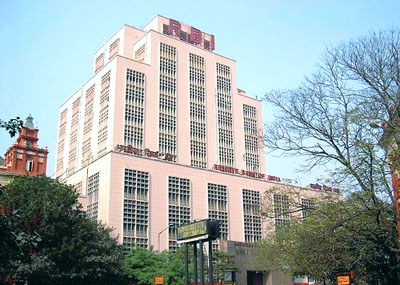The first risk, which the RBI admittedly acknowledges, is the worrying developments in the external sector of the Indian economy. In 2009-10, India is estimated to have ended up with an exceptionally large current account deficit – 4.1 per cent of GDP. The relative size of this deficit becomes apparent when it is compared with the current account deficits of 2.4 per cent of GDP in 2008-09 and 3 per cent of GDP in 1990-91, the latter being the year of the twin crises. Normally, such a large deficit should produce a depreciation of the exchange rate so as to achieve better external balance. But the rupee actually appreciated by 15 per cent in 2009-10 (till February) against a depreciation of 10.4 per cent in 2008-09. This appreciation will act as a strong constraint to prevent the economy benefiting from higher external demand.
Moreover, with the persistence of accommodative monetary policy in the OECD economies, India will attract greater foreign capital flows which will further push up the exchange rate. This factor could be handled if the RBI had the space to sterilize the larger inflows. But it does not, because the government’s borrowing program has had to be financed by the issuance of fresh securities, which will be 36 per cent higher than current securities. The RBI governor’s statement pithily stated the central bank’s dilemma: ‘While monetary policy considerations demand that surplus liquidity be absorbed, debt management considerations warrant supportive liquidity conditions.’ Like the large current account deficit, these higher bond yields will dampen investor sentiment.
The second risk to GDP growth is contained in India’s extreme dependence on investment demand to sustain growth. This risk is obvious when one looks at the major sources of Indian GDP growth in past years; public expenditure, private consumption and imports, and investment demand.
As to public expenditure, in 2010-11 India plans to wind back public expenditure so as to order to achieve a stipulated reduction of the fiscal deficit of 1.2 per cent of GDP. This decrease will reduce the contribution of government demand to GDP growth to less than 14 per cent of what it was in 2009-10.
As to private consumption and imports, in 2009-10, private consumption accounted for 36 per cent of GDP and net exports contributed a whopping 20 per cent. The large contribution of net exports was a complete contrast with the prevailing trend of negative 8 per cent contribution of net exports to GDP growth during the period 2001-08, and was only achieved because imports slumped much more than exports. With imports rising by 66 per cent in February, net external demand will become negative again in 2010-11. Similarly, private consumption demand will decrease because the effects of the (one-time) Sixth Pay Commission awards and farm debt waiver will wear off. Rising prices of manufactured goods will also weaken private consumption.
We are thus left only with investment demand, which contributed a measly 26 per cent to GDP growth in 2009-10. Investment demand is admittedly on the rise, with non-food credit off-take increasing to 16.9 per cent by March 2010 compared with 17.3 per cent in 2008-09. But it is still weak.
It could also be argued that GDP growth will be bolstered by the steady increase in the growth rate of capital goods imports since September. But the business expectation index has begun to moderate. And the hike in banks’ lending rates, which has already been announced, could further weaken investors’ intentions. Worryingly, more hikes are likely as a result of tightened monetary policy, and increased security-funded government borrowing. Finally, the appreciating rupee will dampen capacity expansion and employment generation in the export-oriented sector.
In sum, it would have been more realistic for the RBI to target a lower GDP growth rate of 6.5-7 per cent. A lower growth target, still stellar when compared to an expected global growth rate of 3.6 per cent in 2010-11, would have allowed the RBI to take a more robust approach to tackling inflation expectations. Such a target would also have signaled to the government that it needed to pursue second-generation structural reforms more vigorously. That alone would have raised the growth rate of potential output.
As a related aside, the RBI’s estimate of wholesale price index inflation – 5.5 per cent in March 2011 – is perhaps too low. According to ICRIER’s estimates, inflation is set to rise in the coming months, will remain in double digits until around October, and will then decline to 7-8 per cent by March 2011 if there is no further stress on food supplies or a rise in global oil and commodity prices.
The RBI should have acted more decisively to try and get ahead of the inflation curve. Ultimately, the Indian economy will be benefited most by the implementation of structural reforms, and the limitation of government borrowing.
Rajiv Kumar is director and chief executive of the Indian Council for Research on International Economic Relations (ICRIER).

